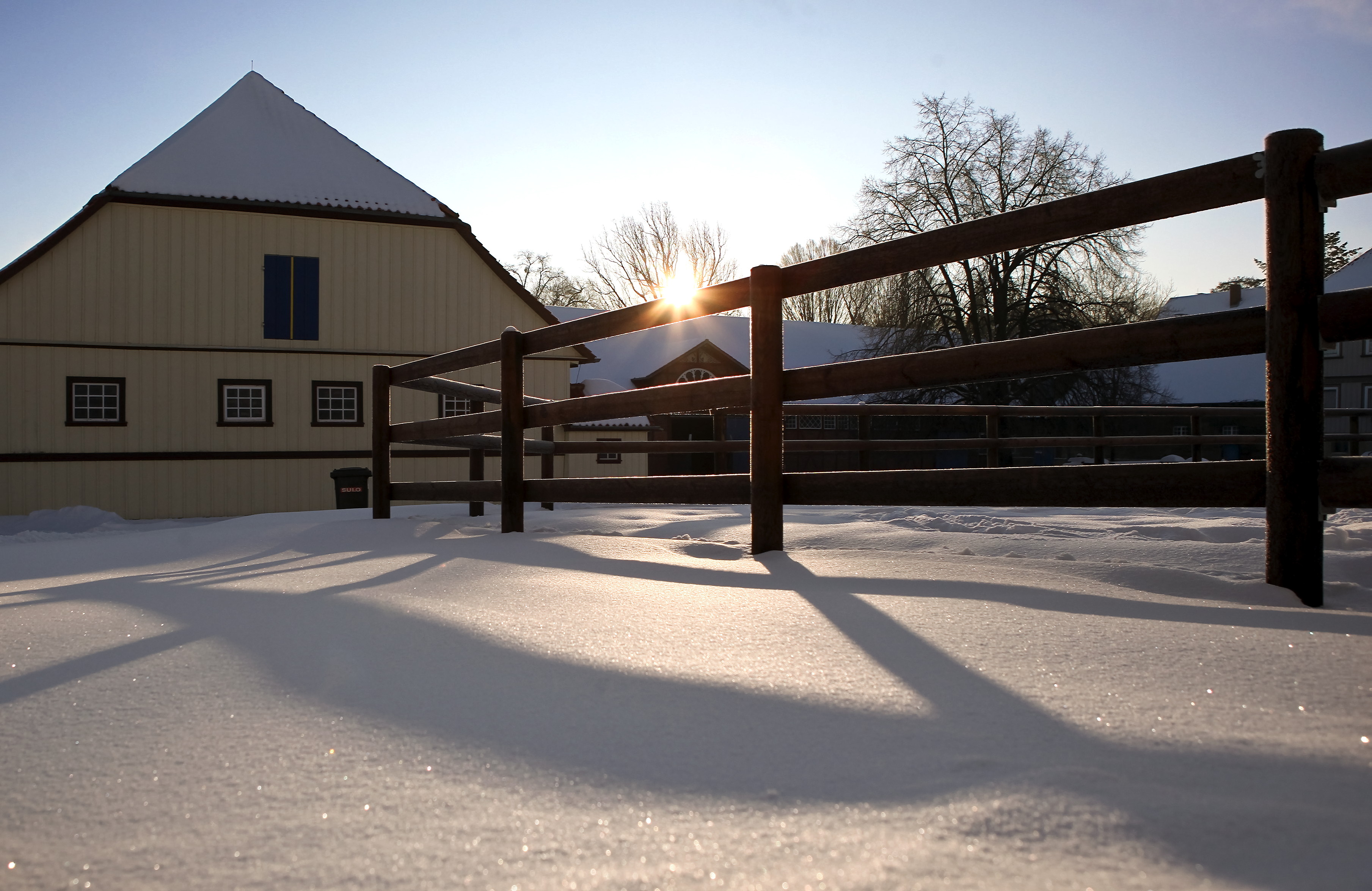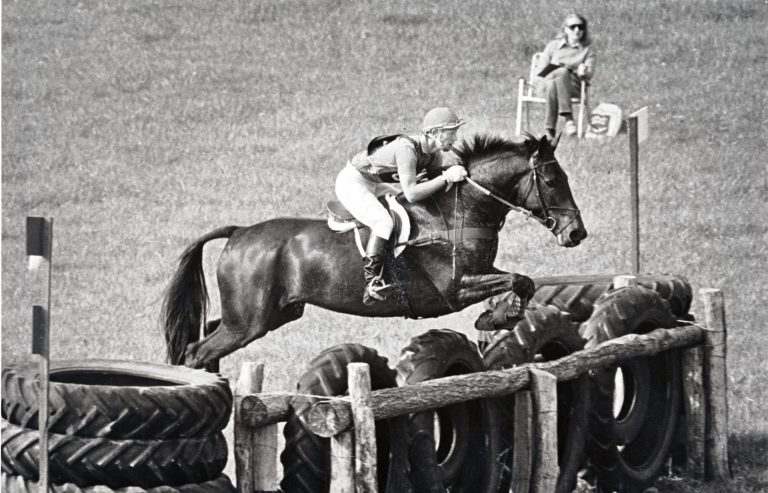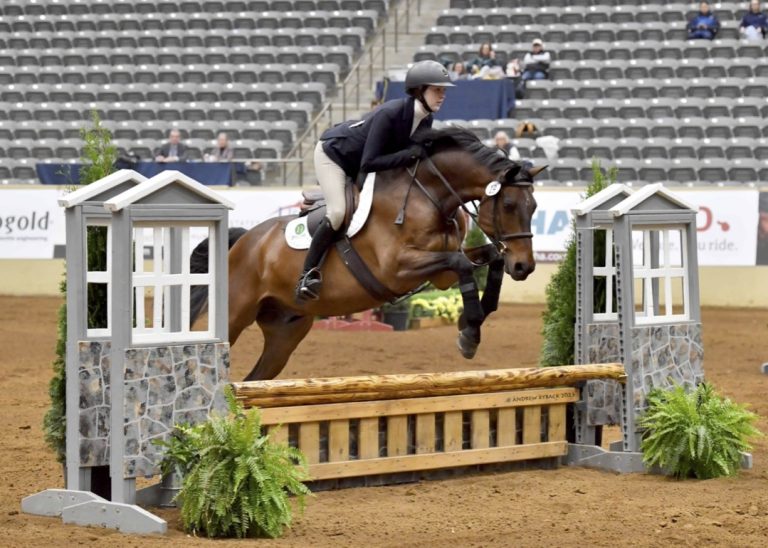
A Prac reader asks: “I recently bought a small horse property in New England and am preparing for my first winter on it. Do you have any tips for winterizing the barn?”
Sarah Geike, a top judge and trainer, weighs in on the subject:
One of the first things I recommend doing is checking your hay and bedding supplies. The availability of both can decline dramatically mid-winter. Ideally, store enough hay mid-fall to last until next year’s first cutting. If that’s not possible, find a reliable supplier willing to bring you hay at any time throughout the winter, even on short notice. Similarly, stockpile enough bedding to get you through the winter or arrange for a supplier to make regular deliveries.
Also in the fall, inspect the entire exterior of your barn. Look closely for any type of damage or deterioration—loose boards, broken windows, missing shingles, etc. Be sure to complete any necessary repairs before winter starts. Winter weather can quickly turn a minor issue into a major structural problem. In an especially cold climate, air leaks or loss of insulation can lead to drafts. If you have an older barn, opening barn doors judiciously to improve air circulation—which is essential to equine respiratory health—is still preferable to uncontrollable drafts. Well-built newer barns incorporate ventilation into the roof structure to provide adequate air circulation even when the barns are closed up tightly.
Next, ask a plumber to check that all of your plumbing system (indoor/outdoor spigots, automatic waterers, frost-free pumps, etc.) is in working order and properly insulated. If you don’t already have them, consider installing water heaters in your pasture water troughs and heated waterers or buckets in your stalls. Both can be a godsend in extremely cold climates. Also plan to detach, drain and store all of your hoses, both to protect them from damage and to prevent them from freezing solid onto the faucets.
Ask an electrician to inspect your barn’s entire electrical system to make sure it is absolutely safe and capable of addressing your current electrical needs. If you have an older barn, it may be necessary to upgrade the electrical system. An inadequate system is a fire hazard, so this is well worth the expense!
We recently had a tragic barn fire in our region that was traced to a space heater. I strongly urge you to ban space heaters from your barn. If you do decide to use one—for example, in a tack room—enact a policy that it never be left on unattended.
Be sure that you have a secondary power source, such as a generator. Most barns require electricity to run their water pumps, so no power means no water. This can be very dangerous if a snow or wind storm takes out your power for a prolonged period of time.
Check that all horse clothing has been returned from the cleaners and, if necessary, repaired. Re-waterproof all turnout blankets. Also have one extra turnout sheet on hand for every size of horse in your barn in case a turnout blanket gets wet and needs to be replaced temporarily with a warm blanket covered by a turnout sheet.
Finally, create a comprehensive snow-removal plan to guarantee access not just for vehicles to the driveway and main road but also for humans and horses on the pathways to and from the barn and pastures. Be sure this plan includes keeping at least one trailer plowed out at all times, so that you are always ready to transport a horse in case of emergency. Also plan to clear snow away from all gates and barn doors routinely, so there’s no risk of them becoming blocked. Have a designated place to put all the removed snow—somewhere large enough to accommodate multiple storms occurring close together.
If you plan to remove snow yourself, find a convenient location for your plow, snowblower, shovels, etc., so they’re in place and ready to go before the first snow flies. I also recommend stashing several bags of ice melt strategically around the barn, where ice is most likely to accumulate. Icy footing is extremely dangerous for horses.
If you don’t plan to remove the snow yourself, line up a dependable contractor for the entire winter season. Make it absolutely clear that, no matter how brutal a storm is, humans must always be able to get to the horses to care for them.
Sarah Geikie is an FEI four-star dressage judge and current co-chair of the U.S. Dressage Federation’s Instructor/Trainer Committee. She is also a member of the USDF Judges and Freestyle committees. Based at Meadowbrook Farm in Marlborough, Connecticut, where she works with riders at all levels, Sarah is also a very popular clinician with a busy schedule conducting clinics across the country.
This article was originally published in the October 2018 issue of Practical Horseman.










